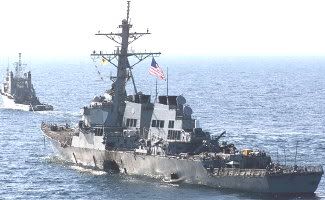We are not attempting to fix all the problems a patient has at the time of presentation -- we may not even have time to identify all the damage suffered -- our primary goal is to stabilize the patient to allow for difinative treatment down the road.
"The concept of Damage Control came from the Navy," explained Dr. John Mayberry. "The idea was to keep a ship in combat from sinking, not to try and make all the repairs needed, just to try and get out of open water and get to port." Once safe at port, full repairs can be initiated.
This concept has long applied to trauma as well. Our job is to get the patient out of open water (the emergency department) and into port (the ICU) without sinking.
At last week's Northwest States Trauma Conference, two different approaches to damage control were presented. Mayberry - a professor of surgery at Oregon Health Science University - looked at 30 years of applying the damage control model to open abdominal wounds. When a patient comes complex abdominal injuries and blood loss, they are often not stable enough to withstand the additional stresses of a long surgical proceedure to address every point of injury.
"Instead of definitive repair of multiple intra-abdominal injuries, the focus of damage control laparotomy is rapid control of hemorrhage, restitution of vital organ blood flow with temporary shunts, and closure of hollow viscus lacerations without anastomosis."
If major bleeding is the overriding problem, skin or fascia is closed tightly to produce tamponade. However, when tamponade of bleeding is not vital, the belly is left open and and a Temporary Abdominal Closure (TAC) is used. As the patient is stabilized a series of operations are performed to repair injuries and remove packing, slowly closing the abdomen while attempting to avoid Intra-Abdominal Hypertension, he explained.
Temporary closure -- whether it be with a the good old Bogata Bag or the increasingly popular vacuum packs -- seems to yield good outcomes as far as recovery from injury and eventual return to work.

Measuring Intra-Abdominal pressures has been found to be beneficial to patients, increasing survival from 50 % to 72 % in one study while actually decreasing resource utilization.
Overall Mayberry's review concluded that the Damage Control approach to abdominal surgery is well worth it. Aggressive management of intra-abdominal hypertension and decompression is beneficial. Early progression to fascial closure prevents complications and long term outcomes are usually good.



No comments:
Post a Comment